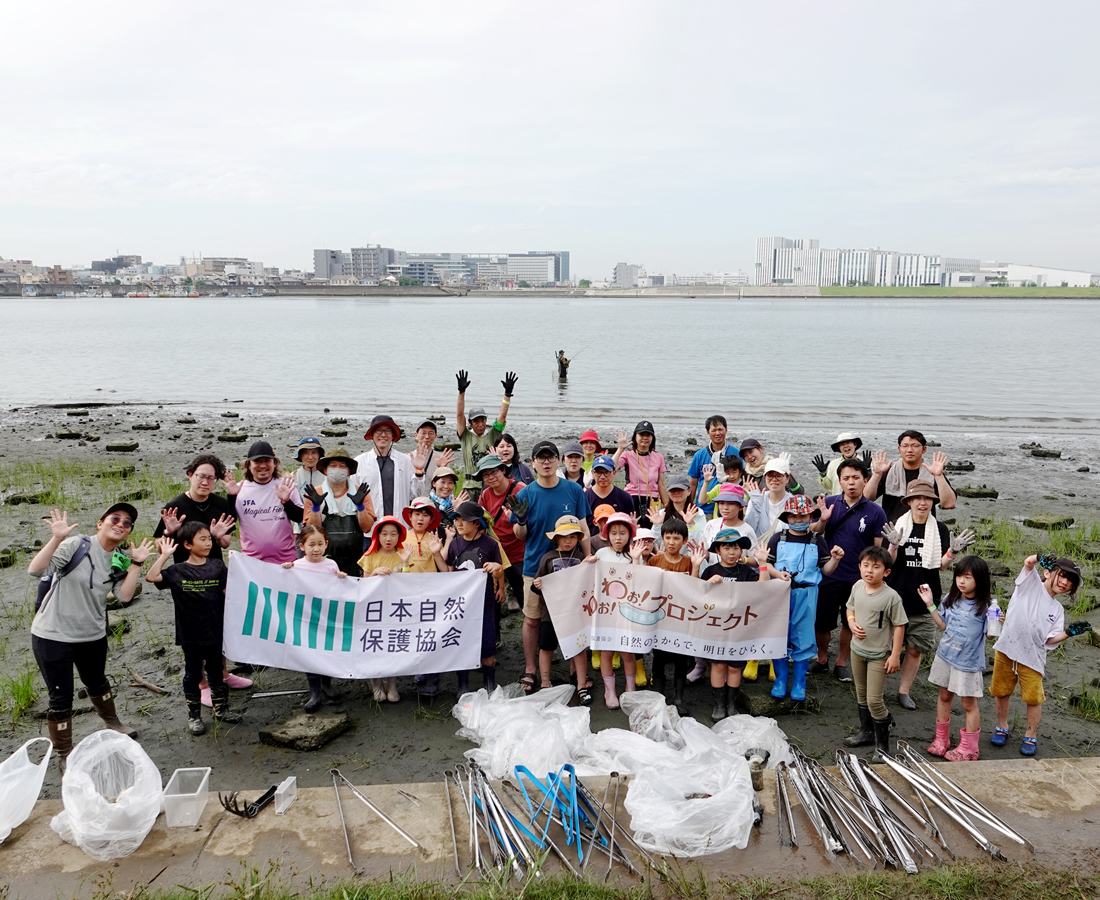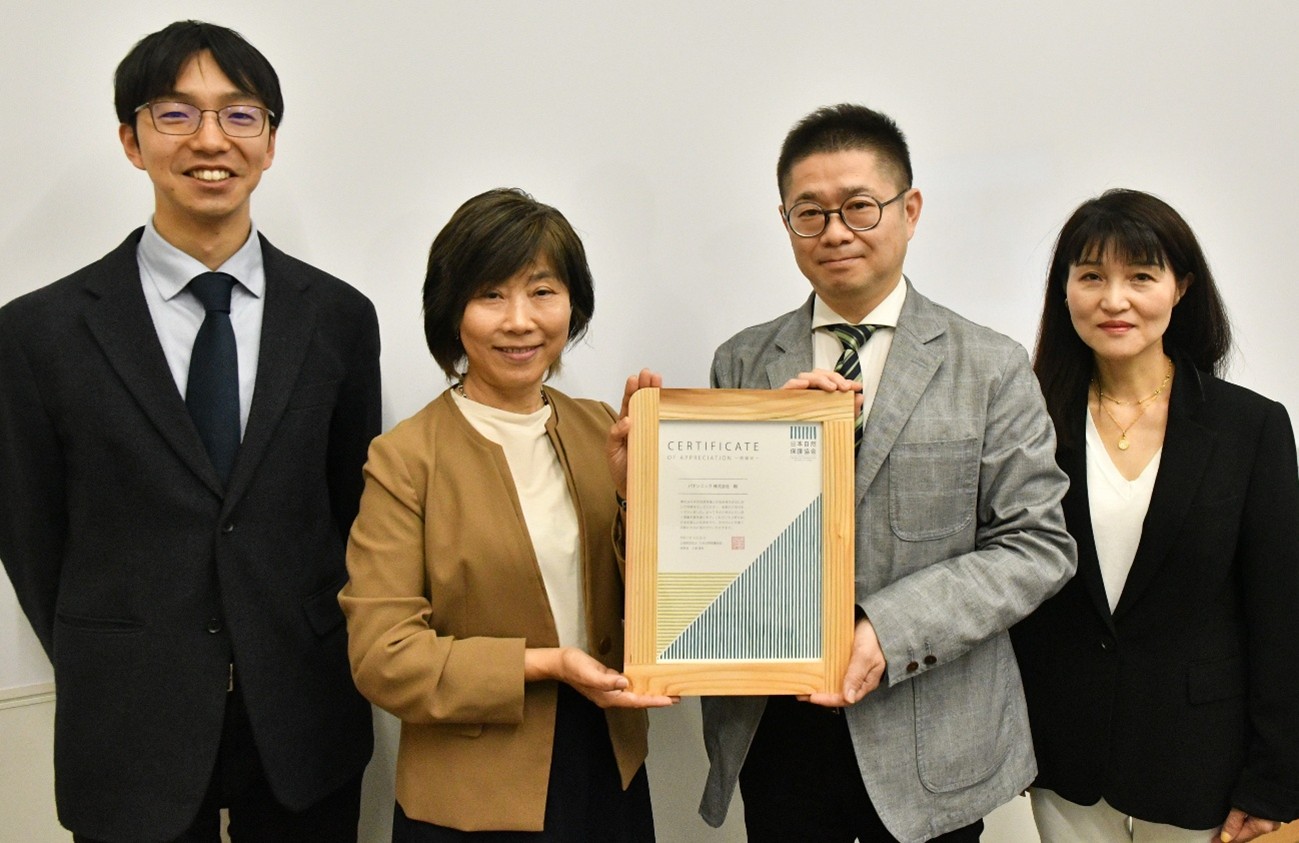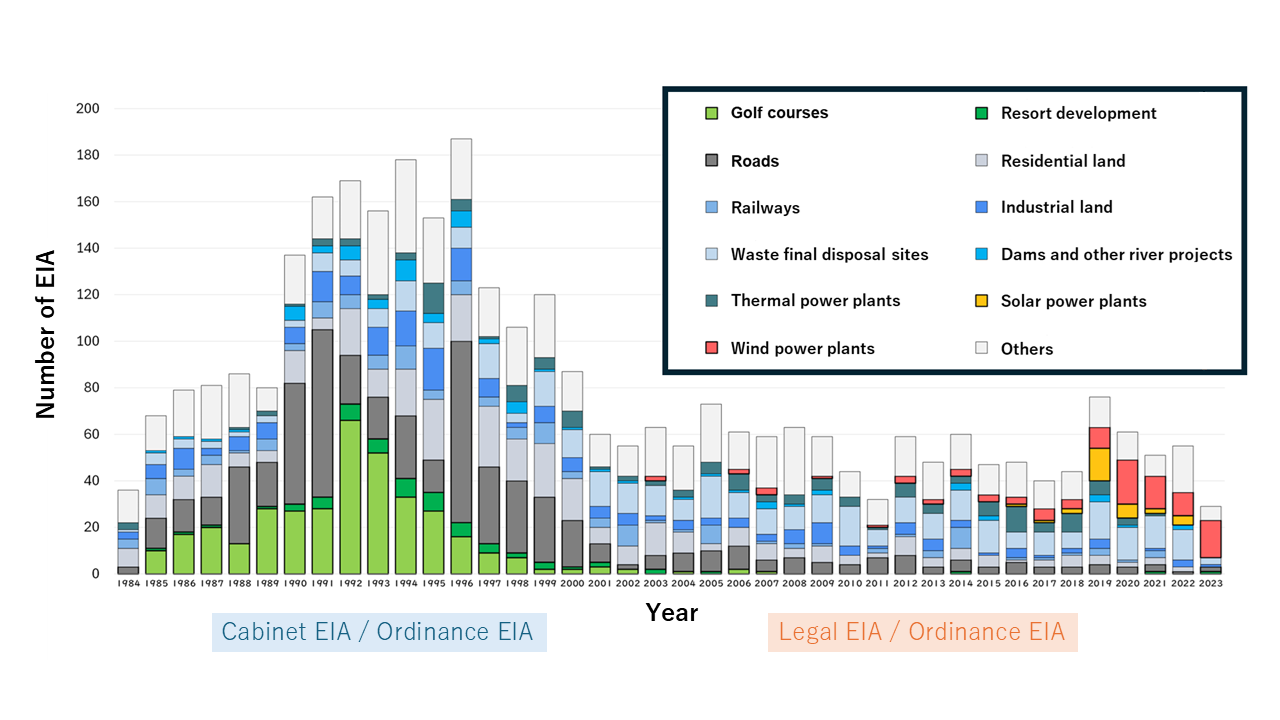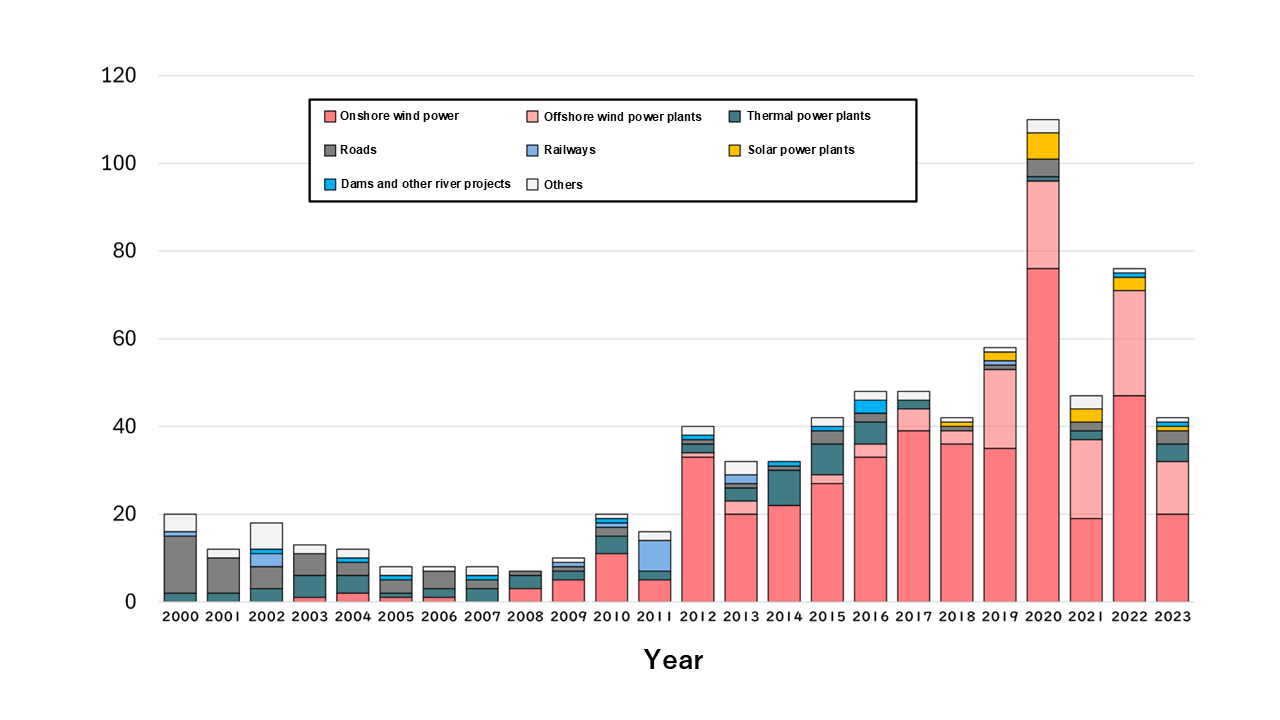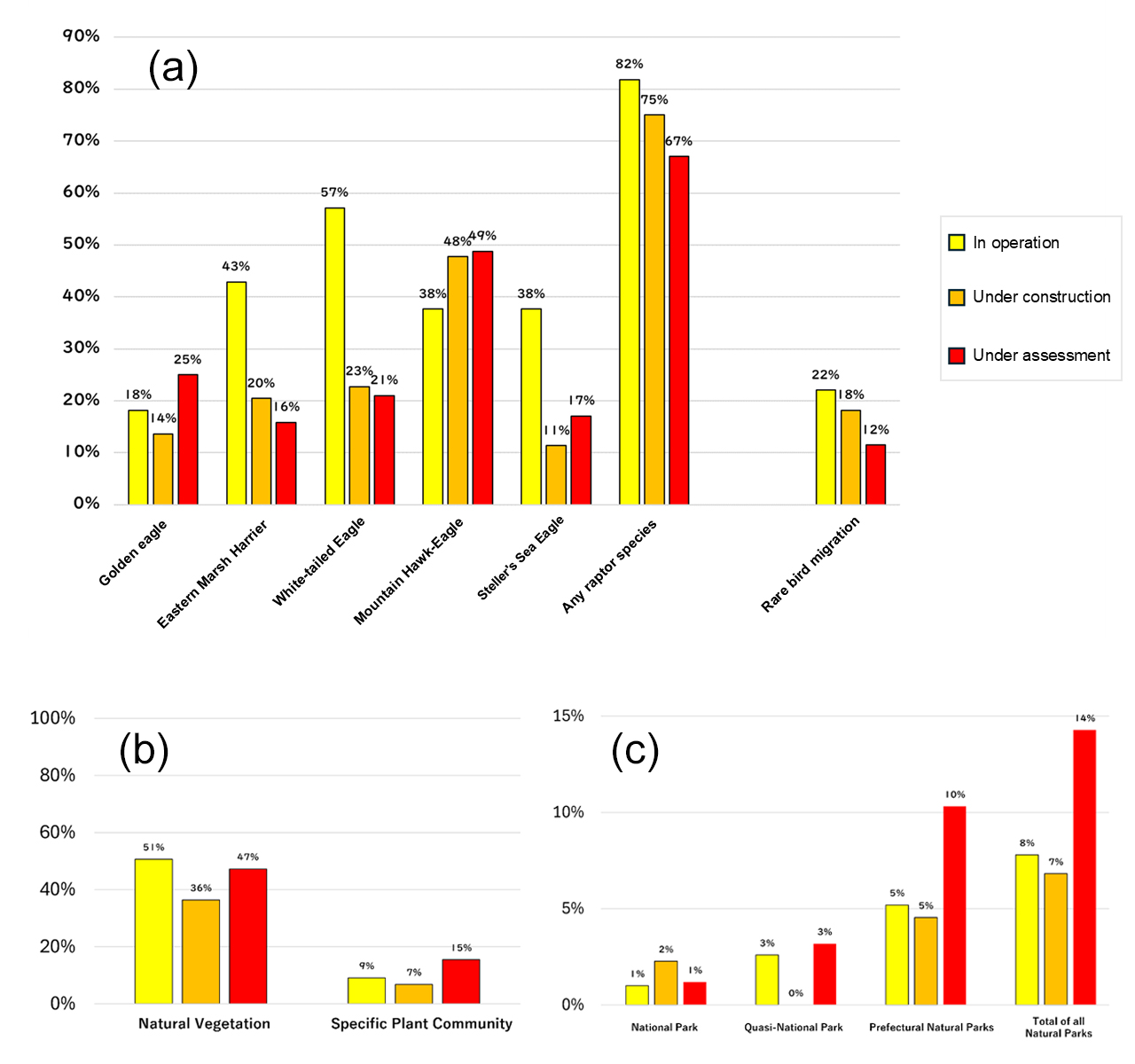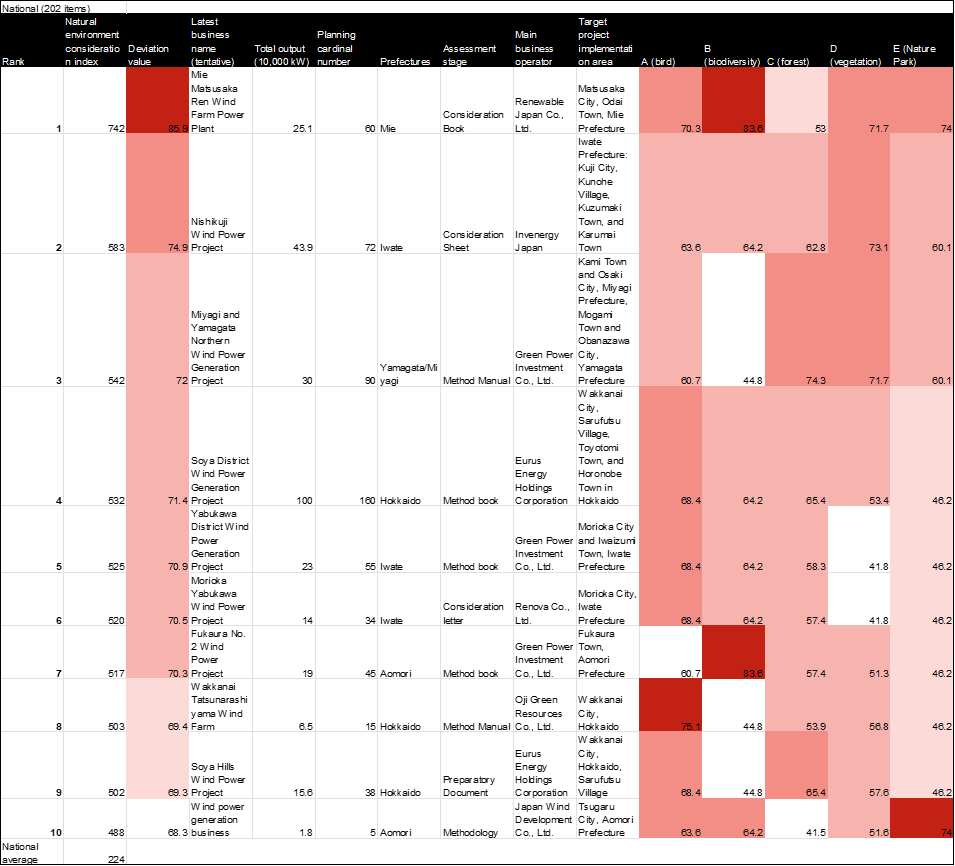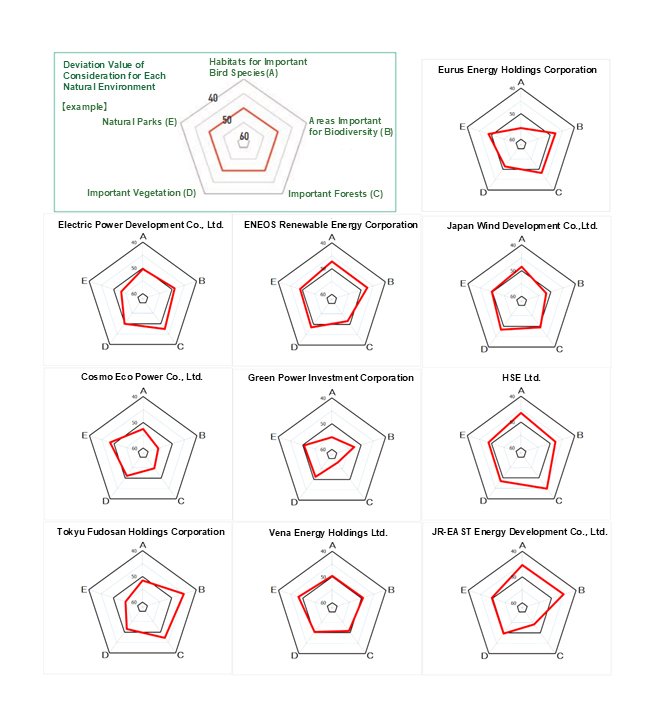2024.09.04(2025.05.12 更新)
Publication of the 2024 Natural Environmental Impact Report of Large Onshore Wind Power Projects in Japan
報告
専門度:
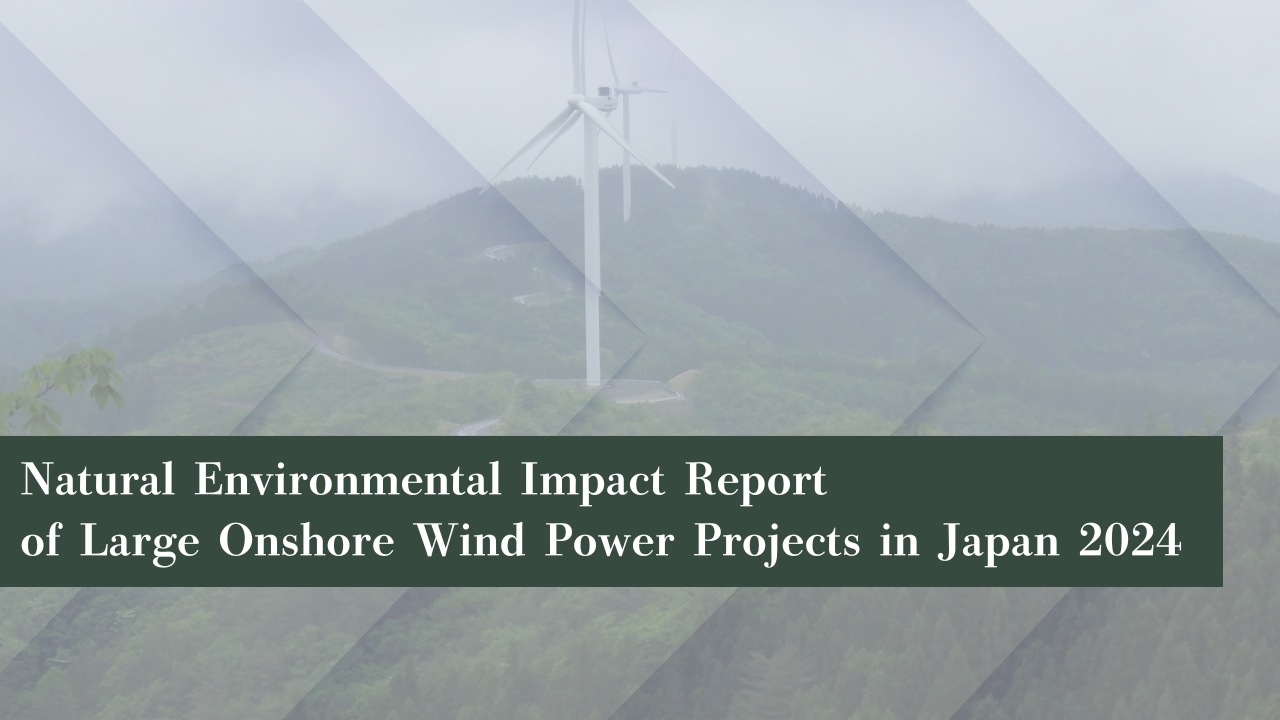
テーマ:環境アセスメント
The Nature Conservation Society of Japan (NACS-J), led by Chairperson TSUCHIYA Toshiyuki, has released its latest report analysing the environmental impacts of large-scale onshore wind power projects. This new report adds updated data to the initial independent analysis published in April 2023.
In 2024, the global average temperature reached a new record high, with severe coral bleaching observed in the Ryukyu Islands—highlighting the growing severity of climate change. Climate change is now a global issue that affects natural ecosystems and human societies alike, demanding urgent and coordinated action. At the same time, there is increasing international concern over the negative impacts of rapidly expanding renewable energy projects on biodiversity. Within Japan, the number and scale of wind power projects have been increasing in recent years, raising concerns over potential harm to local natural and living environments.
In response, NACS-J conducted a detailed independent analysis of 373 onshore wind power project plans scheduled through June 2024. The analysis focused on environmental impact assessment documents (hereafter “EIA reports”), examining the overall impact of these projects on the natural environment and comparing how different developers are addressing environmental concerns.
The findings revealed significant differences in how developers consider the natural environment and disclose information, as well as changes in project trends due to revisions in the EIA system. Based on the results, NACS-J created radar charts visualizing the level of environmental consideration by major developers, compiled rankings on environmental consideration for individual projects, and identified the 10 projects with the most serious negative impacts.
Key Findings and Highlights
- An analysis of year-by-year changes in the number of development projects subject to the Environmental Impact Assessment (EIA) Law revealed that the most environmentally concerning development projects in recent years are onshore wind power plant projects.
- NACS-J independently analysed EIA documents for 373 onshore wind power projects planned up to June 2024.
- The analysis showed that while overall consideration for the natural environment is gradually improving across wind power projects, two-thirds of the projects currently undergoing assessment are located in habitats of endangered birds of prey, indicating that environmental considerations remain insufficient.
- The analysis also clarified significant differences between developers in their level of environmental awareness and consideration.
- Only about 14% of EIA documents are publicly accessible at all times. This poses an ongoing challenge in achieving consensus among stakeholders, which is a fundamental goal of the environmental assessment process.

With the recent expansion of renewable energy projects such as wind and solar power, development projects are increasingly encroaching upon natural environments that are part of our day-to-day lives. How do developers address the impact on the natural environment? And how can we, as members of society, get involved? This article aims to provide a basic understanding of environmental impact assessments (EIAs) associated with development projects.…read more.
In this report, the first focus is on long-term trends in the number and types of development projects subject to environmental assessments over the past 40 years. Starting from the year 1984, when EIA was introduced in Japan, NACS-J analysed the changes in project types based on the publication dates of all formal EIA reports across legal, cabinet, and ordinance EIAs (Figure 1, top). Additionally, for legally mandated EIA projects since the 2000 enactment of the Environmental Impact Assessment Law, changes in project types were analysed based on the issuance dates of the initial scoping documents (“Consideration Statement” for Type 1 projects and “Method Statement” for Type 2 projects) (Figure 1, bottom).
Figure 1. Changes Over Time in Project Type in Projects Subject to EIA (top); Changes Over Time in Project Type Based on Publication Year of “Consideration Statement” and “Method Statement” for legally mandated EIA projects (bottom).
*Click to enlarge (opens in a new window)
Figure 1 (bottom) clearly shows a sharp increase in the number of planned onshore wind power plants in recent years. Given that the issuance of a “Consideration Statement” or “Method Statement” is typically followed by the publication of a formal EIA report within two to five years, it is certain that these plans will significantly increase the total number of EIA reports in the near future. This suggests that, both currently and moving forward, the most environmentally concerning type of development project in Japan is the construction of onshore wind power plants.
Figure 2 presents the results of an independent analysis conducted by NACS-J on 373 onshore wind power projects planned up to June 2024. These projects were categorised as follows:
- Operational (77 projects): Projects where construction has been completed and turbines are currently operating, continuously impacting the natural environment.
- Under Construction (44 projects): Projects for which the final evaluation report has been published, and which are expected to begin operation soon.
- Under Assessment (252 projects): Projects still undergoing the environmental assessment process, where changes to the planned location are still possible, though they may have future environmental impacts.
For each category, the analysis examined whether the project site overlaps with any of the following sensitive ecological areas:
- Habitats of rare bird species
- Natural vegetation and designated plant communities
- Natural parks
The findings showed that, compared to operational projects, those still under assessment are generally more considerate of environmental impact. However, 67% of the under-assessment projects still overlap with habitats of birds of prey, indicating that environmental consideration is still insufficient. Additionally, there is a noticeable increase in the number of projects planned within natural parks.
Figure 2. Percentage of Project Plans that include Habitats of Rare Bird Species (a); Natural Vegetation and Designated Plant Communities (b); and Natural Parks (c).
*Click to enlarge (opens in a new window)
Subsequently, we quantified the level of environmental consideration for each individual wind power project using a unique scoring framework. We established 30 evaluation criteria, including:
- Presence of rare bird species such as the Golden Eagle
- Overlap with Key Biodiversity Areas (KBAs)
- Presence and area ratio of protection forests
- Proportion of natural forest coverage
- Presence of conservation forests
- Overlap with national, nationally designated, or prefectural natural parks
Each project was scored based on these indicators, and the “Natural Environment Consideration Index” was calculated as the total sum of all points assigned. Based on the results, the 10 projects with the lowest levels of environmental consideration were identified and presented in Table 1. Among these, six are located in the Tohoku region and three in Hokkaido.
Table 1. Top 10 Onshore Wind Power Projects in Japan with the Greatest Environmental Impact Concerns *Click to enlarge (opens in a new window)
*The Wind Power Generation Business (no.10) was officially cancelled on June 28, 2024.
To visually compare the level of environmental consideration among developers, Figure 3 presents an analysis of the top 10 developers with the highest number of planned projects. For each company, we calculated the deviation scores of their projects in terms of the extent to which they overlap with the following five environmental factors:
- A. Habitat of important bird species
- Ecologically important biodiversity areas
- Critical forest zones
- Important vegetation types
- Natural parks
As higher deviation scores indicate lower levels of environmental consideration, the radar chart is structured so that higher values are plotted closer to the centre. Thus, developers with more environmentally inconsiderate projects will have smaller charts, while those with more environmentally considerate projects will appear larger.
The company with the largest radar chart, indicating the highest overall level of environmental consideration, was HSE Corporation, which scored above average in all five categories. In contrast, Cosmo Eco Power Co., Ltd. and Green Power Investment Corporation recorded deviation scores exceeding 50 in four or five categories, suggesting relatively lower levels of environmental concern. Additionally, Eurus Energy Holdings Corporation showed a particularly low level of consideration for important bird habitats.
Figure 3. Environmental Consideration Levels by Developer for All Operational and Under-Assessment Wind Power Projects.
*Click to enlarge (opens in a new window)
Future Challenges and Recommendations
1) Developers should formulate project plans that prioritise biodiversity conservation
The analysis revealed that current wind power projects under environmental assessment tend to show greater consideration for the natural environment compared to those already operational or under construction. However, the level of consideration is still far from sufficient. More than 200 projects are currently under assessment—three to four times the number of operational wind farms—raising serious concerns about the cumulative environmental impacts of future large-scale wind energy development. Moreover, the size of wind turbines has nearly doubled in the past decade, increasing the risk of bird strikes.
While some developers have stated in the media that it has become difficult to find suitable locations that also protect the environment, our analysis showed that certain companies are actively exploring more environmentally appropriate sites. As a result, the degree of environmental consideration varies significantly between developers.
To truly promote sustainable renewable energy, it is essential for developers to place stronger emphasis on biodiversity conservation and to design their projects with the natural environment in mind.
2) Developers should improve the transparency of environmental assessment information
EIA is a process for investigating, predicting, and evaluating the potential environmental effects of human activities, particularly those that will potentially significantly impact the environment. One of its core principles is to share information broadly with stakeholders and reach consensus through dialogue. However, over 80% of EIA documents are not made publicly accessible at all times, and there has been a sharp increase in projects that skip the initial “Consideration Statement”. These trends indicate a neglect of the EIA system’s fundamental goal—improving projects through transparency and public engagement.
Developers should demonstrate a genuine commitment to creating better projects by enhancing public accessibility to information and ensuring that anyone can review and engage with project plans.
3) The national government should establish a system for appropriate project siting
To properly guide private sector projects, the Japanese government needs to develop a robust framework for appropriate site selection for wind power projects.
Following the 2020 Regulatory Review Task Force on Renewable Energy led by the Cabinet Office, the threshold for projects subject to EIA under the Environmental Impact Assessment Law was raised from 10 MW to 50 MW. As a result, some wind power projects—despite raising environmental concerns—have been able to bypass the “Consideration Statement” process. Given that the environmental impact of onshore wind farms is more strongly determined by location than by output capacity, it is necessary to revise the EIA law to better account for the ecological characteristics of potential sites.
4) Companies in other industries and consumers should pay closer attention to the environmental impacts of renewable energy
Globally, the importance of corporate responsibility in addressing climate change is increasingly recognised. Initiatives like the Task Force on Climate-related Financial Disclosures (TCFD) demand transparency in corporate decarbonisation efforts, and as such, renewable energy procurement is becoming essential for companies.
In addition, the release of TNFD v1.0 (Taskforce on Nature-related Financial Disclosures) in 2023 signals a growing expectation for companies to disclose and assess nature-related risks and opportunities. Even corporations outside the energy sector risk being seen as unsustainable if they procure electricity from renewable energy sources that fail to adequately consider environmental impacts—regardless of their decarbonisation claims. This undermines progress on biodiversity conservation.
To ensure truly sustainable decarbonisation, not only energy companies but society as a whole must evaluate whether ecosystem and biodiversity harm is being avoided, and make decisions from a holistic and multi-faceted perspective.
Reference
About the Nature Conservation Society of Japan (NACS-J)
Founded in 1951, the Nature Conservation Society of Japan (NACS-J) is one of the oldest nature conservation organizations in Japan, dedicated to protecting nature and biodiversity.
NACS-J’s activities began with the conservation of Oze’s natural environment during a dam construction project and later contributed to the World Natural Heritage registrations of Yakushima, Ogasawara, and Shirakami-Sanchi.
Today, the organization continues to protect vulnerable natural environments across Japan with the mission, “Making A New Path For Tomorrow, With The Power of Nature.”
NACS-J envisions a society where people and nature coexist harmoniously, enabling people of all generations, from infants to the elderly, to live happily surrounded by nature.
The organization conducts nationwide surveys, conservation projects, and other initiatives to make use of natural resources, spanning from mountains to the ocean.
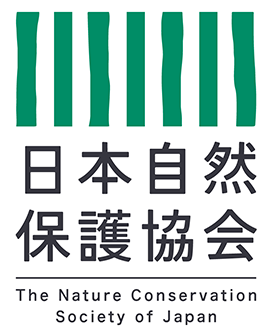



 主な活動 TOP
主な活動 TOP
 支援の方法TOP
支援の方法TOP 会員制度/入会申込み
会員制度/入会申込み 遺贈・遺産・お香典のご寄付
遺贈・遺産・お香典のご寄付 チャリボン(本・DVD等での寄付)
チャリボン(本・DVD等での寄付) お宝エイド(不用品の買取寄付)
お宝エイド(不用品の買取寄付) 寄付金控除・褒章制度について
寄付金控除・褒章制度について その他の支援方法
その他の支援方法 講習会日程一覧・お申込み
講習会日程一覧・お申込み
